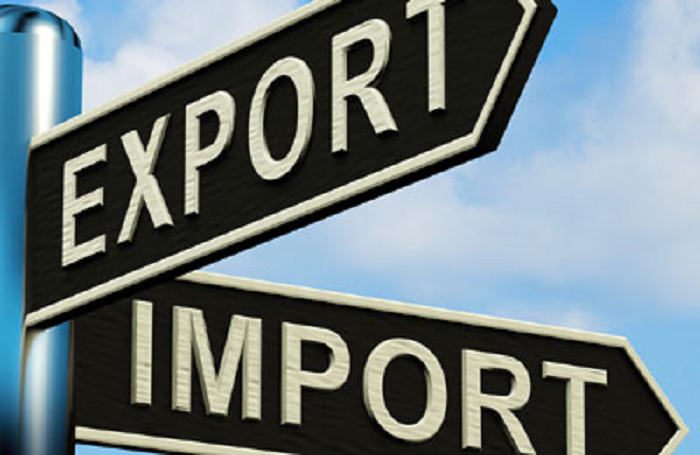
The Sunday News

Talkmore Chidede
BOOSTING intra-regional trade in Africa, and also within the Southern African Development Community (Sadc), has been an important focus of the regional integration agenda for some years.
An array of strategic policies and legal arrangements have been implemented to advance intra-Sadc trade.
However, there has not been significant increase in intra-regional trade in Southern Africa.
The Organisation for Economic Co-operation and Development (OECD) (July 2017) has observed that, despite the strong political commitments, intra-Sadc trade has increased slightly since the creation of the free trade area in 2008.
Intra-Sadc trade is only 10 percent, low compared to other regions like the South-East Asian Nations (24 percent) and the European Union (40 percent).
This, in essence, means that 90 percent of Sadc’s trade is with external regions or countries.
Furthermore, intra-Sadc trade is dominated by South Africa which enjoys a significant trade surplus for the region.
The OECD says intra-Sadc trade is not growing speedily due to both tariff and non-tariff barriers, underdeveloped trade-related infrastructure, weak manufacturing capacity, and poor implementation of trade commitments.
By and large, intra-regional trade benefits co-operating and integrating countries by creating more jobs, supporting expanded and new markets, greater economies of scale and enhanced competition for domestic firms.
It also attracts foreign direct investment into the region, and increases the bargaining strength or negotiating capacity of participating countries.
More importantly, intra-regional trade improves the welfare of citizens by enabling them “to procure goods and services from the cheapest source”.
It must be noted, however, that the benefits are dependent on the degree of integration and complementary domestic policies, among other things.
How to boost intra-Sadc trade?
Sadc consists, generally, of small economies and markets that are struggling to alleviate poverty and unemployment as well as to attract FDI.
The OECD has identified enormous potential for further expansion of intra-Sadc trade and has made the following recommendations.
Sadc could enhance intra-regional trade by eliminating non-tariff barriers (NTBs) which make trade costlier and difficult.
For instance, simplifying customs procedures reduces trade costs in the region, and addresses issues of delays and supports smooth movement of goods at borders; and encourages the participation of small businesses in cross-border trade. Furthermore, the elimination of NTBs stimulates competition — which promotes economic development by ensuring that all businesses interact on a level playing field.
In addition, effective trade-related infrastructure and investment policies play an important role in enhancing intra-regional trade in Southern Africa as they improve the inter-connectivity of systems across the region.
Sadc countries should broaden the scope and improve the implementation of existing trade agreements (eg Trade and Services Protocols).
For instance, broadening the scope of trade to include services by implementing the Sadc Protocol on Services (2012), which is aimed at establishing an integrated regional market for services.
The Protocol should also add more services not covered by existing protocols. Services trade liberalisation would allow consumers and business to have access to better services at lower prices.
Services are integral to intra-regional trade because they are “job-creating and productivity-enhancing inputs into the competitive edge of almost all other activities and are of particular importance in allowing firms to participate in regional and global value chains”.
In addition, Sadc must strengthen institutional frameworks to achieve its objectives.
Relevant national and regional institutions should be charged with implementing and co-ordinating the regional agenda, and to hold member states accountable for non-compliance.
Closely related, there is a need to develop stable internal funding systems to finance the regional trade-related projects.
Moreover, there is a need for coherent regulatory policies across many sectors (e.g. tax, finance and investment) to allow creating for an integrated market.
Coherent regulatory policies increase predictability and legal certainty — and increase the rate of entrepreneurial activity.
In addition, regional industrialisation is also crucial to boosting intra-Sadc trade as it creates an enabling environment for trade.
It is important to recognise that reducing tariff and non-tariff barriers will support the development of regional value chains to promote overall regional industrial development.
Overlapping membership also complicates the regional trade environment and raises the overall cost of doing business, since different rules (eg rules of origin) have to be complied with.
The Tripartite Free Trade Area (TFTA) could assist to address some of these challenges; whether this is the case or not will depend on the extent of commitments undertaken by member states.
The TFTA can also contribute to boosting intra-regional trade, for instance, through trade facilitation measures such as the development of one-stop border posts to ease the movement of goods and people.
Boosting intra-regional trade is more than eliminating tariffs, “it is about addressing on-the-ground constraints that paralyse the daily operations of ordinary producers and traders” (World Bank, 2015).
The case for enhancing intra-Sadc trade is not intended to hold back the region’s trade with other regions across the continent and the world at large, but rather aimed at improving their competitiveness and capacity to trade with other sub-regions.
While boosting intra-regional trade is crucial for Sadc member states, they also need to trade with countries outside the region.
Chidede is a researcher at the Trade Law centre, is a capacity-building organisation developing trade-related capacity in east and southern Africa.



